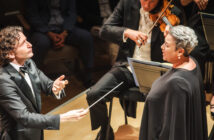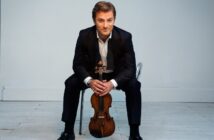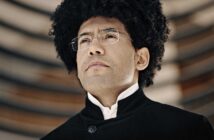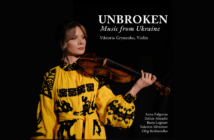by Paul E. Robinson
Mozart: The Magic Flute
Austin Lyric Opera (ALO)Director: James MarvelConductor: Richard BuckleyThe Long Center
Austin, Texas
Saturday November 5, 2011
Congratulations are in order for the Austin Lyric Opera on the occasion of its 25th Anniversary. The organization also deserves enormous credit for dealing quickly and apparently effectively with a serious financial crisis that came to a boil last spring. Changes since then have included the resignation of General Director Kevin Patterson, the listing of ALO’s office building for sale, and major program cuts to the 2011-2012 season. Kevin Smith was appointed interim General Director and principal conductor Richard Buckley was given the additional title of Artistic Director.
Mozart’s The Magic Flute was the first opera the ALO produced in its inaugural season in 1987. In a program note Kevin Smith declares that the theme of the 25th anniversary is “Let the Magic continue…;” unfortunately, there was little, if any magic in James Marvel’s production of The Magic Flute.
Let it be said at the outset that The Magic Flute is full of wonderful music, but the libretto is an unruly mishmash of comedy and spirituality. It is a huge challenge for any director to make sense of it all and put it together in a way that is both faithful to Mozart and intelligible for the audience. Come to think of it, there are any number of Shakespeare plays that pose a similar challenge.
I don’t know this for a fact, but I would guess that director James Marvel had another challenge too; that is, how to mount a production of one of Mozart’s greatest operas with a severely trimmed budget resulting from the ALO’s financial troubles. Marvel and artistic director Buckley probably had to engage cheaper and less experienced singers than they originally intended and had to make do with less elaborate sets and costumes. Be that as it may, I can really only go by what I saw and heard at the Long Center, and frankly, I was disappointed.
Mr. Marvel talks a good game. In his program notes, he goes on about the Masonic elements in the opera, and about how the main theme of the work is the “many faces” of love. But what he put on stage was a musical comedy version of the opera. He stressed the jokes and the sight gags and treated the serious elements as satire. Does he not listen to the music? In the choruses and elsewhere, one hears kinship with some of Mozart’s most profound works such as the Masonic Funeral Music and the Requiem. There is plenty of comedy in The Magic Flute, but it is only there to leaven the generally serious, indeed life and death matters which are the heart and soul of the opera. The opera is about love but it is also about the power of love, wisdom and music to overcome adversity and superstition. This is Enlightenment thinking in the form of art and it permeates nearly every scene in the opera.
Metaphors abound in The Magic Flute. The Queen of the Night represents the forces of darkness and she and her followers are in a life and death struggle with the forces of light represented by Sarastro and his priests, but Marvel and Lighting Designer David Nancarrow have chosen to bathe everyone in the brightest possible light from beginning to end. The costumes are invariably bright and perky and the sets are little more than a series of risers with sliding panels. Some projections are used to supply what is lacking on stage, but these are barely more than rudimentary. By using so many bright lights and costumes, Marvel eliminates the basic contrasts in the story of the opera – worse than that, he removes all mystery from the spiritual elements.
Speaking of removing things, why didn’t we have a serpent in the opening scene; a fuzzy projection doesn’t count! And what happened to the Two Men in Armor in Act Two? Their music was sung by two priests. No money available for the right costumes? And what are we to make of the way chorus members were allowed to file onstage in rows as if preparing for a concert, and leave the same way? Marvel seemed to have no idea how to move large groups, let alone give the individual singers any sense of character; they invariably lined up like zombies. Is Sarastro running a cult or what?
One of the most impressive productions of The Magic Flute I have seen was presented at the Savonlinna Festival in Finland (1986). August Everding was the director and Toni Businger did the costumes. In the castle courtyard where the performances are given, conventional sets are impossible, and yet the use of imaginative props and costumes – yes, including a wonderful serpent – and a great cast made this production a profoundly moving experience. It was the magnificent choir in this production that brought me to the realization that the spirit of Mozart’s Requiem lives in this music and that Beethoven was undoubtedly influenced by these choruses in The Magic Flute when he came to compose the “Prisoners’ Chorus” in Fidelio.
My point is that a successful production is not necessarily about lavish sets and huge budgets; it has more to do with simply understanding the opera and finding a way to capture its essence.
On the musical side, Richard Buckley must take some of the blame. None of the principal vocalists came close to producing the sound and phrasing required by Mozart, with the possible exception of Jamie-Rose Guarrine (photo above: right) in the smaller role of Papagena. Some of the singing, in my opinion, was simply unpleasant.
It is fashionable to take fast tempi in Mozart these days, but that doesn’t make them right. Consider Buckley’s tempo for the Allegro section of the Overture. This section is not marked ‘Allegro molto’ or ‘Presto’ and yet Buckley took off at top speed. His tempo choice not only ignores what Mozart wrote, but is at odds with the spirit of the opera. Buckley’s tempi were invariably faster than usual – compare Bruno Walter or Colin Davis – and were of a piece with Marvel’s musical comedy approach.
The Austin Lyric Opera has shown a flair for presenting familiar operas in new ways, as well as unfamiliar works which are both substantial and entertaining. But The Magic Flute was not a wise program choice, given a director with so little appreciation of the work and too few singers up to the musical challenges.
ALO Flute Lacks Magic!
0Paul E. Robinson is the author of Herbert von Karajan: the Maestro as Superstar, and Sir Georg Solti: His Life and Music. For friends: The Art of the Conductor podcast, “Classical Airs.”
Share:














